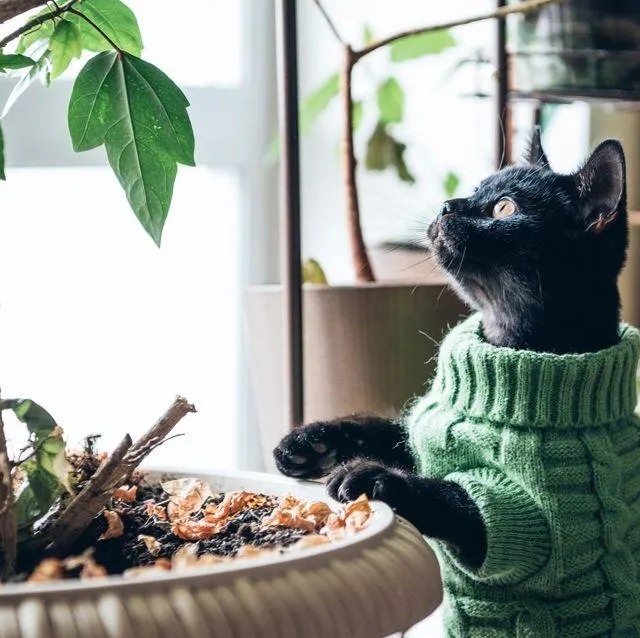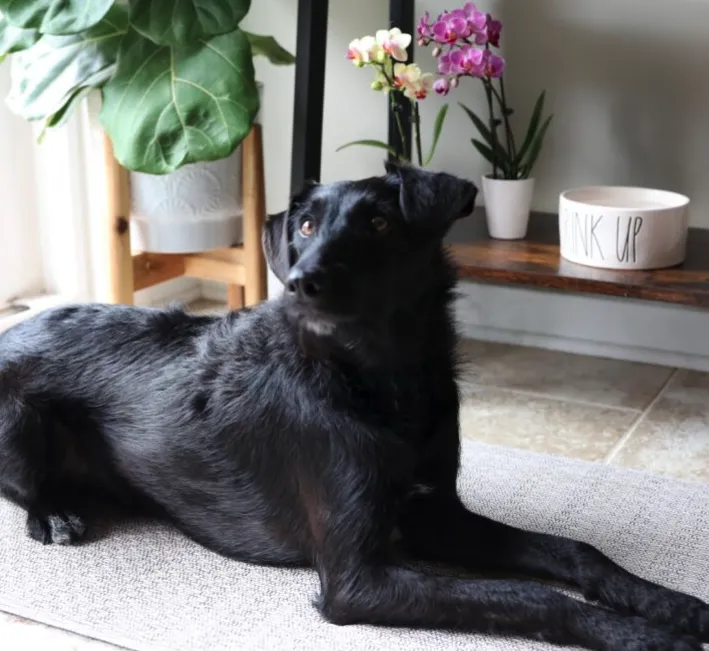The Best Houseplants for Cat Owners
If you share your home with feline friends, finding houseplants that won’t put your cats at risk is important. In this article, I’ll discuss some of the most popular low-risk indoor plants and provide answers to common questions cat owners have about keeping greenery safe around pets.
Non-Toxic Houseplants
- Peace lilies (Spathiphyllum)
- Snake plants (Sansevieria)
- Spider plants (Chlorophytum comosum)
- Pothos (Epipremnum aureum)
- Chinese evergreen (Aglaonema)
- English ivy (Hedera helix)
- Ponytail palm (Beaucarnea recurvata)
- ZZ plant (Zamioculcas zamiifolia)
These plants are generally considered safe for cats based on studies and reports that they don’t cause significant oral irritation or digestive issues when ingested. From my experience owning multiple cats over the years, peace lilies, pothos, and spider plants seem to withstand an occasional nibble without problems. These sturdy greens can take some clawing and chewing without serious harm.
What Parts of Plants Are Most Toxic?
In general, the most dangerous parts of houseplants to cats are bulbs, seeds, berries, stems, and leaves when ingested in large quantities. Roots typically pose less risk compared to other plant material. For example, while lily flowers and leaves can potentially poison cats, the bulbs present the highest toxicity. It’s best to avoid plants containing bulbous roots completely with cats in the home.
How Do Plant Toxins Affect Cats?
Exposure to toxic houseplants may cause anything from mild stomach upset to acute kidney failure in cats. Symptoms can include vomiting, diarrhea, decreased appetite, depression, excessive drooling or lip-licking, and in severe cases, weakness and seizures. The kidneys and liver are most vulnerable as they process plant toxins from the digestive tract. Effects range from mild irritation to organ failure, depending on the type and amount of plant material ingested. Prompt veterinary care is necessary for any cat showing signs of plant poisoning.

Can Toxic Plants Harm Cats Through Other Means?
While consumption is the primary concern, it’s possible for cats to be exposed to toxic plant material in other ways too. For example, lilies are dangerous even if cats don’t ingest parts directly. Simply sniffing pollen or brushing against flowers could potentially cause a toxic reaction from airborne contact. The pollen is highly absorbent through the mouth and nasal passages. It’s best to avoid bringing toxic lilies indoors altogether where curious cats may encounter them.
Cats and Children: A Double Risk?
When kids are part of the household, plants pose a twofold threat. Not only are mischievous cats at risk of sampling greenery, young children may handle or try eating plant parts as well. It’s crucial to carefully research the safety of any indoor plants if there are kids under 5 interacting in the home. Consider sticking to strongly reinforced non-toxic options like pothos or snake plants during baby and toddler years. Safety should be the top priority where pets and children’s lives are concerned.
Protecting Your Plants from Feline Fancy
While restricting access is optimal for toxic species, even safe houseplants may not withstand perpetual clawing, chewing or repotting by curious cats. Here are some tips to deter plant problems without banning your pets:
- Place pots up high out of paws’ reach, such as on high shelves.
- Cover soil surfaces with decorative gravel to discourage litterbox-like digging behavior.
- Secure plants inside weighted cachepots or hanging baskets where cats can’t access soil.
- Use plastic sheeting, contact paper or foil under pots to deter scratching of leaves and stems.
- Spray or wipe on non-toxic, bitter citrus or capsaicin deterrents.
- Provide alternate cloth-covered or sisal scratching posts as alternatives.
With some creativity, it’s definitely possible to “cat-proof” your plant collection. Just be prepared for the odd chewed leaf now and then from extremely determined kitties!

My Cats Ate a Toxic Plant – What Should I Do?
If your cat ingests any part of a potentially poisonous houseplant, it’s important to stay calm yet act swiftly. First, identify the plant to determine its toxicity level. Then contact your vet right away or the ASPCA Animal Poison Control Center hotline at (888) 426-4435. Be prepared to provide plant details and symptoms. Signs to watch for include vomiting, diarrhea, abnormal behavior, or breathing problems. Your vet can determine if decontamination or medical treatment is needed based on the specifics. Don’t attempt to induce vomiting without guidance, as some plant toxins may irritate the digestive tract further if brought back up. Speedy poisoning care can make a big difference in outcome, so don’t delay professional assistance. With prompt veterinary intervention, the prognosis is often good – but toxic exposures always warrant caution.
Bringing Cats and Plants Together Safely
With some diligent planning and “catproofing”, many feline owners find fulfilling ways to incorporate the joys of houseplants without risks to their furry friends. While certain toxic species should always be off-limits, with a careful research-based selection of sturdy, non-toxic greenery matched to each cat’s personality, it’s possible to nurture healthy indoor plants alongside healthily curious felines. Proper placement, protection of vulnerable parts, and commitment to monitoring access goes a long way in achieving plant-pet peace. And of course, keeping those vines, fronds and leaves well away from little mouths in multi-pet homes is key. By giving our cats suitable scratching alternatives and making any plants they may sample 100% non-toxic, we can share our indoor ecosystems responsibly.
Houseplants Safe for Cats
| Plant | Toxicity Level | Notes |
|---|---|---|
| Peace Lily | Non-Toxic | A pleasant choice that removes harmful chemicals from the air. |
| ZZ Plant | Non-Toxic | Thrives with little light and water, tolerant of neglect. |
| English Ivy | Low Toxicity | Can irritate skin on contact, keep higher or use cat-proof planters. |
| Spider Plant | Non-Toxic | Cat-friendly foliage in various green shades, deters spiders. |
| Pothos | Low Toxicity | Hardy vine trails gracefully, avoid if cat seems an aggressive chewer. |
| Snake Plant | Low Toxicity | Tall sturdy foliage filters pollutants, tolerate neglect between waterings. |
FAQ
Cats are naturally curious creatures and like to bite and nibble on houseplants, so it’s a good idea to research which plants are non-toxic before bringing any new plants home. Some common houseplants that are poisonous to cats include lilies, aloe vera, orchids, philodendron and spider plants. It’s best to keep these kinds of plants out of reach of your cat.
Pothos plants are generally considered safe for cats. The pothos is one of the few houseplants that is non-toxic if eaten in small quantities by cats. However, like any plant, cats may still have an allergic reaction to pothos. Keep an eye on your cat when it’s around pothos to make sure it doesn’t try to eat large amounts.

Peace lilies, or Spathiphyllum, are highly toxic to cats and can cause drooling, vomiting, and diarrhea if ingested. Additionally, peace lilies release a toxin through their sap that can be harmful if it contacts the eyes or mouth of cats. It’s best not to keep peace lilies or other lily varieties as houseplants if you have cats.
Snake plants, also called mother-in-law’s tongue, are considered non-toxic to cats in moderate amounts. However, some cats may exhibit an allergic reaction to snake plants. If your cat seems curious about the snake plant, it’s a good idea to place it high up or in another room to avoid any potential issues. Otherwise, snake plants can generally be around cats with little risk.
Many succulents, such as aloe vera, jade plants, and ponytail palms are not safe for cats. However, varieties like echeveria, haworthia, and kalanchoe seem to be low risk for cats. Keep an eye out though, as some succulents may cause mild diarrhea if ingested.Succulents are attractive plants, but monitor your cat’s behavior closely if keeping succulents as houseplants.
Catnip is a member of the mint family that contains nepetalactone, which triggers a behavioral response in most cats. While catnip itself is not toxic, in large quantities it may cause cats to become overstimulated. It’s best to offer moderate amounts of fresh or dried catnip as toys instead of allowing cats unlimited access. Watch for signs of overstimulation like frantic behavior, drooling, or lethargy after playing, and remove catnip toys when your cat loses interest.

No plant is 100% cat-proof since individual cats may have different reactions. However, some relatively low-risk plants for cats include spider plants, english ivy, ZZ plants and bamboo palm. These plants have a reduced chance of causing illness if nibbled or ingested. But it’s still smart to place preferred cat plants where your furry friend can look but not touch. Outdoor plants provide fur-safety too!
Providing acceptable plants for cats may help distract them from forbidden foliage. Catnip and cat grass are safe herb options eagerly consumed by most felines. Planted together in one area like a pot or cat garden bed, they offer an attractive chew-and-sniff alternative to riskier houseplants. It works like a compromise – cats get to nibble approved greenery while leaving prized ornamentals alone with minimal care. But no guarantees as each cat has a unique personality!
